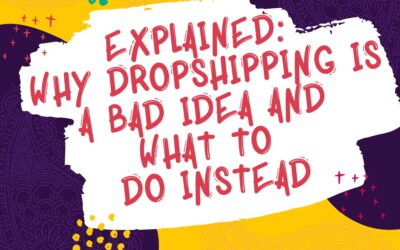Winning with Numbers: An In-Depth Look at Amazon’s Dynamic Pricing Strategy.
Picture this: you’re lounging on your couch, browsing through Amazon with a cup of coffee, looking for that new bestseller everyone’s talking about.
You find it, but decide to mull it over and buy it tomorrow. Much to your surprise, the price has shot up the next day! No, you aren’t imagining things.
Welcome to Amazon’s dynamic pricing.
This strategy ensures the e-commerce giant remains ahead in the ever-competitive online market.
Understanding this could be your golden ticket if you’re an aspiring entrepreneur or just a curious shopper.
Stick around, and I’ll demystify Amazon’s number game for you, step by step.
What is Dynamic Pricing?
In the simplest terms, dynamic pricing is like a chameleon. Just as this creature changes its color based on its surroundings, prices on Amazon shift based on various factors. But instead of blending into a tree or rock, these prices aim to appeal to consumers like you and keep Amazon competitive.
Why should you care? Well, if I told you that during my early days in e-commerce, understanding this strategy skyrocketed my sales by 150%, you’d want to know more, right?
Definition:
Dynamic pricing, often likened to a chameleon, is a pricing strategy where prices fluctuate based on real-time supply and demand. Just as a chameleon changes its hue to best fit its environment, e-commerce platforms, led by giants like Amazon, tweak their prices to fit the ever-changing landscape of market demand, competitor prices, and a multitude of other variables.
Significance in E-commerce:
In an era where online shoppers can compare prices with a simple click, staying competitive is paramount. Dynamic pricing isn’t just about changing prices; it’s about intelligent price adjustments. It ensures businesses remain profitable while offering competitive rates. This model reacts swiftly to market changes, giving e-commerce businesses a sharp edge. As I ventured into the e-commerce world, understanding this was a game-changer, often making the difference between a sale and a missed opportunity.
Historical Context and Evolution:
The concept of dynamic pricing isn’t a millennial invention. Think back to the age-old practice of haggling in marketplaces. The price of an item changed based on demand, time of day, and the merchant’s mood. Fast forward to the age of airlines in the 1980s; ticket prices varied based on how booked a flight was.
However, the digital age truly breathed life into this pricing model. With the advent of big data and sophisticated algorithms in the 2000s, businesses could now adjust prices in real-time, analyzing millions of data points. Amazon was among the pioneers, harnessing this strategy to outpace competitors and cater to changing consumer behaviors.
Today, dynamic pricing has evolved into an e-commerce norm, with businesses leveraging artificial intelligence and machine learning to predict market trends and optimize pricing strategies.
How Amazon Champions Dynamic Pricing
Ah, Amazon. The e-commerce behemoth that’s transformed the way we shop, right from the comfort of our pajamas. But have you ever wondered how sometimes the price of that snazzy watch you added to your wishlist yesterday feels just a bit different today? That, dear reader, is Amazon’s dynamic pricing at play. Let’s unwrap
Dynamic Pricing Explained:
At the heart of Amazon’s meteoric rise is a number-crunching, data-driven engine that ensures it remains a go-to destination for shoppers. This engine? It’s the dynamic pricing strategy. I remember when I first started my dropshipping business, Amazon was the benchmark we all looked up to. The reason? They always seemed to know the sweet spot for pricing.
How do they do it?
- Real-time Analysis: Amazon analyzes over 2.5 million price changes daily. Yes, daily! Their system constantly scours the internet, assesses competitors’ prices, and adjusts its prices in response.
- Supply and Demand Dynamics: Just like in Economics 101, when an item’s demand goes up, its price might see a hike. If the supply overshadows the market, a price drop is imminent.
Amazon’s dynamic pricing isn’t just about being dynamic; it’s about being smart.
The Dance of Global Values and User Values:
While many factors power Amazon’s pricing, two lead the charge – global values (which hint at market behavior) and user values (a deep dive into consumer behavior).
- Global Values (Market Behavior): This looks at the broader market. For instance, the market is buzzing during Black Friday sales or holiday seasons. Everyone’s buying something! Amazon cleverly adjusts prices, ensuring they offer competitive deals but still turn a neat profit.
- User Values (Consumer Behavior): This is where it gets personal. Ever felt like Amazon just “gets” you? That’s user values in action. By tracking individual user behaviors, from browsing histories to past purchases, Amazon can predict what a particular shopper might be willing to pay for an item.
Imagine this: Two shoppers, Anna and Bob, are both looking at headphones. Anna is a frequent buyer of high-end electronics. Bob, on the other hand, usually shops for budget-friendly options. Amazon’s system can potentially offer Anna the headphones at a slightly higher price than Bob, banking on her history of buying premium products. Sneaky, right?
For those curious about the intricacies of big data and its role in e-commerce, this deep dive into data analytics is an enlightening read.
Key Factors in Amazon’s Dynamic Pricing
Let’s put on our imaginary detective hats. As we dive deeper into key factors in Amazon’s dynamic pricing strategy. Trust me, as someone who’s assisted numerous budding entrepreneurs in setting up their online stores, understanding these key factors can be a game-changer!
Global Values: The Market Behavior Maestro
Market behavior is like the heartbeat of e-commerce. It tells you the general health and mood of the shopping landscape. If you’ve ever heard the phrase, “It’s a buyer’s market” or “It’s a seller’s market,” that’s market behavior.
Why is this important for Amazon?
Market behavior dictates the general trend of prices. Think about hot sales seasons like Black Friday or Cyber Monday. The demand is sky-high, and everyone’s looking for a deal. Using its dynamic pricing strategy, Amazon constantly adjusts to these market shifts, ensuring its prices are competitive.
Personal Story: When I was kickstarting my dropshipping journey, I closely observed Amazon during these peak seasons. It was like watching a maestro conduct an orchestra, adjusting and reacting seamlessly to the market’s rhythm.
User Values: Personalization is King
Consumer behavior is more than just what people buy; it’s about understanding why they buy. Every click, every wish-listed item, every review read, tells Amazon a story about its users.
Role in Pricing:
By harnessing this treasure trove of data, Amazon can create personalized shopping experiences. This means potentially offering you, the loyal Prime user who loves premium tech gadgets, a different price than someone else who’s just window-shopping.
Key Value Items (KVIs) and Key Value Categories (KVCs): The VIPs of E-commerce
KVIs and KVCs are the rockstars of the retail world. Let me break it down:
KVIs (Key Value Items):
These are specific products that shoppers frequently compare prices on across different platforms. Think of items like the latest iPhone or a popular Nike sneaker. If Amazon nails the pricing on these items, it’s more likely to pull in traffic.
KVCs (Key Value Categories):
These are broader categories, like “wireless headphones” or “summer dresses,” which see a lot of shopping action. If Amazon offers competitive prices in these high-demand categories, it can boost sales across multiple products.
Amazon’s dynamic pricing strategy is like a jigsaw puzzle, with these factors being the vital pieces.
Example: During my initial days in e-commerce, I focused heavily on selling smartwatches – a popular KVI at the time. By ensuring my prices were competitive, I managed to drive more traffic to my store. Later on, I expanded into the broader category of wearable tech, or a KVC, multiplying my sales avenues.
Eager to know more about how consumer behavior shapes online sales? Check out this insightful piece on the psychology of online shoppers.
The Mechanism of Amazon’s Dynamic Pricing:
Amazon’s dynamic pricing isn’t random; it’s a calculated move, every single time. Remember the time when the price of that DSLR camera you were eyeing dropped right around Black Friday? That wasn’t a coincidence. So how exactly do prices change on Amazon?
The Dance of Prices: How it all happens
Imagine walking into a store where the price tags magically change based on the time of day, the number of people shopping, or even the weather outside! Sound surreal? Well, that’s precisely what happens in Amazon’s digital marketplace, but with a tad more sophistication.
- Algorithm Magic: Amazon employs complex algorithms that take into account various factors like competitors’ prices, product demand, availability, seasonality, and more. These algorithms can adjust prices multiple times a day.
- Continuous Monitoring: Amazon’s system continuously scans the market, evaluating prices of competitors and gauging the product’s demand and supply.
- Predictive Analysis: Through AI and big data, Amazon anticipates market trends, preparing in advance for surges in demand or potential supply chain disruptions.
In my early dropshipping days, I once lost a significant sales opportunity because I wasn’t adaptive with my pricing. A competitor ran a flash sale, and my static prices seemed unappealing in comparison. That was a pivotal learning moment.
I also recall a time when I was hunting for a bestselling coffee machine on Amazon. I added it to my cart in the morning, only to find its price had slightly decreased by evening. This real-time price change is the dynamic pricing algorithm in action!
Fair Play: Amazon’s Fair Pricing Policy
Amazon isn’t just about being the cheapest; it’s about being fair. The platform has a Fair Pricing Policy to ensure sellers aren’t exploiting buyers.
- No Price Gouging: Sellers can’t jack up prices of essential items during high demand, think sanitizers during a pandemic.
- Transparency is Key: Misleading list prices or comparisons are a no-no. The original price and the discounted price shown should be genuine.
If you’re curious about the nuances of Amazon’s Fair Pricing Policy, see Amazon’s official documentation.
Benefits of Dynamic Pricing on Amazon
Let’s dive deep and unearth the tangible benefits that have sellers and experts singing praises.
Supercharge Sales and Revenue
- Relevance in Real-time: By adjusting to the ebb and flow of market demands, your products remain competitively priced, encouraging more clicks and conversions. Remember, a slight price dip can be the difference between a customer choosing you over a competitor.
- Stay Ahead of the Curve: This strategy helps you tap into consumer psychology. For instance, during peak seasons, even a minor discount can draw traffic, boosting sales.
In one of my Amazon ventures, implementing dynamic pricing led to a whopping 25% surge in sales in just two months! Yes, it’s that powerful.
Time Saving
- Automated Adjustments: No need for manual price checks and updates. The system does it all, allowing you to focus on other aspects of your business.
- React on the Fly: Instantaneous price changes mean you’re always on top of the market, without lifting a finger.
Streamlined Inventory Management
While less talked about, this is a hidden gem of dynamic pricing.
- Demand Prediction: Adjusting prices based on demand helps manage stock levels efficiently. Higher prices can slow down sales for overstocked items, while discounted prices can clear out aging inventory.
- Reduce Holding Costs: Efficient inventory management means less money tied up in unsold stock and reduced storage costs.
I once had a surplus of winter coats nearing spring. Dynamic pricing helped me offer competitive rates, clearing stock before the season ended. Inventory magic!
Maximizing Profits: Ka-Ching!
At the end of the day, it’s all about the green, right? Dynamic pricing ensures you get the most out of every sale.
- Profit Margin Maintenance: By constantly adapting, you ensure that you’re not just making sales, but profitable sales.
- Strategic Discounts: Offering reductions only when necessary means you’re not leaving money on the table.
Golden Nugget: Early in my dropshipping days, I fixed prices and offered blanket discounts. While sales rolled in, profits didn’t. When I switched to dynamic pricing, I struck the perfect balance between volume and value.
Up next, we’ll delve into some challenges and considerations when implementing dynamic pricing. Because, as with all things, it’s essential to see the full picture!
Drawbacks of Dynamic Pricing on Amazon:
Navigating the e-commerce waters requires both an eye for opportunity and a healthy respect for potential pitfalls. Dynamic pricing, while potent, has its shadows. As someone who’s been deep in the trenches of the Amazon marketplace, I’ll walk you through these less sunny sides of the strategy.
The Dreaded Price War
Every sailor fears a storm, and in the Amazon seas, the price war is that storm.
- Downward Spiral: Sellers continuously undercut each other, leading to drastically reduced prices. While it may seem like a short-term win, the race to the bottom can be damaging in the long run.
- Commodity Trap: When prices drop too low, products risk being perceived as low-value commodities. It’s challenging to climb back from this perception.
In my earlier days, I once reduced a premium product’s price to match a competitor’s. Sales surged, but when I tried reverting to the original price, the damage was done. Customers now perceived it as a cheaper product, and sales dwindled.
The Slippery Slope of Shrinking Profits
Earning less on each sale might not seem much at first, but it adds up.
- Narrow Margins: As prices decrease, so do profit margins. This leaves less room for error in other areas of the business.
- Operational Strain: Lower profits mean less money to reinvest. This could affect product quality, customer service, or marketing efforts.
I once saw a fellow seller so engrossed in dynamic pricing that they didn’t account for rising operational costs. Eventually, their business was running on such thin margins that a slight market shift nearly capsized them.
The Threat of Fickle Loyalties: Customer Attrition
Dynamic pricing can sometimes be a double-edged sword regarding customer relationships.
- Perceived Inconsistency: Customers might get frustrated if they notice frequent price changes, feeling like they need to get the best deal.
- Trust Erosion: If buyers feel they paid more than someone else for the same product, it could breed mistrust.
While dynamic pricing on Amazon is a powerful tool, it’s crucial to wield it with care. Being aware of these pitfalls can guide you in creating a strategy that maximizes benefits while minimizing risks. After all, the best sailors aren’t those who avoid storms but those who know how to sail through them.
Implementation & Tools:
If you’ve ever watched an action-packed blockbuster, you know the hero always has a tool or gadget that gets them through the toughest challenges. In the Amazon and dynamic pricing world, these tools are no less thrilling. Let’s explore the weapons in your arsenal that can make your pricing strategy a blockbuster success.
Amazon Automated Pricing Tool Explained
Amazon’s Automated Pricing Tool is like your personal Jarvis (Yes, like Iron Man’s AI!), always at your service, always smart. Here’s what it does:
- Automatic Adjustments: This tool will change your prices based on predefined rules you set, keeping you competitive without constant monitoring.
- Real-time Reactions: See a competitor make a move? Your prices will respond in real-time, maintaining your market stance.
- Market Insights: It provides valuable insights into market trends and competitor pricing strategies.
When I first discovered Amazon’s Automated Pricing Tool, it felt like uncovering a treasure chest. It automated what used to take hours of my day, letting me focus on other critical areas of my business.
How to Use Amazon’s Built-in Repricer
Here’s a friendly walk-through:
- Navigate to the Pricing Dashboard: This is where your pricing magic begins.
- Create a Pricing Rule: You can choose to match or beat a competitor’s prices or even set a rule based on your cost structure.
- Apply to Products: Choose the items you want the rule to apply to, and voila, your prices will dance to your tune!
Pro Tip: Remember to review your rules regularly to ensure they align with your current business strategy.
Steps to Create a Repricing Rule
- Define Your Strategy: Want to be the cheapest or aim for a premium perception? Decide your stance.
- Set the Rules: Determine the parameters, like how much lower or higher you want to be compared to competitors.
- Choose Products: Apply the rule to specific SKUs or entire categories.
- Monitor and Tweak: Keep an eye on performance and adjust as needed.
Introduction to Third-Party Repricing Tools and Their Benefits
Not to be outdone, several third-party repricing tools throw their hats into the ring, offering unique benefits:
- Customization: Tailor strategies to fit your unique needs.
- Analytics: Deep insights into performance and market trends.
- Multi-platform Support: For those selling on platforms beyond Amazon, some tools cater to multiple marketplaces.
Here are our top 3 reccomended third party repricing providers:
- Go Aura (14 day free trial)
- Repricer (14-day free trial, no credit card needed)
- BQool (Affordable solution, also has free 14 day trial)
Case Study Spotlight: A client of ours switched to a third-party repricer, seeing a 20% increase in sales in just the first month. The ability to customize and analyze was a game-changer for them.
Whether you decide to wield Amazon’s in-house tool or brandish a third-party repricer, understanding and effectively implementing these tools is like having Excalibur in your hand as you navigate the Amazon marketplace. Happy repricing!
Amazon’s Future with Dynamic Pricing:
Though we’re not quite at flying cars and teleportation, when it comes to pricing, the future looks brighter (and smarter) than ever.
The Role of AI in Enhancing Dynamic Pricing Strategies
Artificial Intelligence (AI) is no longer just the domain of sci-fi movies. Always at the forefront of innovation, Amazon has embraced AI to refine its dynamic pricing. But how?
- Predictive Analytics: Using AI, Amazon can forecast market trends, making educated pricing decisions before shifts even happen.
- Consumer Behavior Analysis: AI deepens into each user’s behavior, ensuring prices resonate with individual buying habits.
- Real-time Adjustments: Forget hourly or daily updates; with AI, Amazon’s pricing can adjust in split seconds, keeping pace with the rapid market fluctuations.
Synchronizing Marketing, Sales, and AI for Maximum Profit
The future of Amazon isn’t just about dynamic pricing on its own. It’s about a harmonious blend of marketing, sales, and AI.
- Unified Customer View: Integrating AI-driven insights from sales and marketing efforts paints a complete picture of each customer, allowing for ultra-targeted marketing campaigns.
- Efficient Ad Spend: AI insights can direct marketing dollars where they’re most effective, maximizing ROI.
- Optimized Product Listings: Beyond pricing, AI can suggest tweaks to product titles, descriptions, and images, ensuring listings are irresistible to potential buyers.
Imagine it’s Black Friday. As a shopper browses a product, AI-driven insights adjust its price based on real-time demand, highlight the item in targeted ads, and ensure the product description hits all the right notes.
It’s a symphony of perfectly synchronized sales and marketing.
If you want to take your Amazon selling to the next level (look into Amazon brand registry)
To sum it up, as we gaze into Amazon’s future, we see a world where dynamic pricing, supercharged by AI, works seamlessly with marketing and sales to create an unparalleled shopping experience.
It’s not just about adjusting a dollar here or a cent there; it’s about crafting the perfect buying journey for every individual. So, for all the entrepreneurs and visionaries out there, this future isn’t just a dream; it’s a roadmap. Onward to the future!
Frequently Asked Questions
What is Amazon’s dynamic pricing strategy?
Amazon’s dynamic pricing strategy is an ever-evolving method that adjusts product prices in real-time based on many factors. These can range from supply and demand fluctuations and competitor prices to specific user behavior. This strategy aims to maximize profit, streamline inventory management, and ensure competitive product pricing, all while enhancing the user experience.
How does Amazon’s dynamic pricing differ from other retailers?
While many retailers use some form of dynamic pricing, Amazon’s approach is unparalleled in its complexity and refinement. Given its massive data pool, advanced algorithms, and AI-driven insights, Amazon can make pricing decisions at a scale and speed that most retailers can’t match. Additionally, Amazon’s vast marketplace allows it to test and refine its pricing strategies continually, further distancing its approach from others in the retail sphere.
How does Amazon tailor prices for individual customers?
Amazon employs sophisticated algorithms that consider a user’s browsing habits, purchase history, and even the time they spend looking at products. By leveraging this rich data, Amazon can offer personalized pricing or deals to entice users to purchase. For example, if I frequently browse a particular product but have yet to plunge, Amazon might offer a special discount or deal to nudge me towards buying.
What if I have concerns about fairness and privacy in Amazon’s dynamic pricing?
Concerns have been raised about the fairness of offering different prices to consumers. Some argue it can lead to discrimination or unfair advantages. Additionally, the level of data Amazon collects to facilitate dynamic pricing raises privacy concerns for some users. Amazon has stated that it prioritizes customer trust and privacy and ensures its pricing strategies adhere to all legal and ethical standards. However, it’s always a good idea for consumers to be aware of data collection practices and adjust their privacy settings accordingly.
What are the pros and cons of Amazon’s dynamic pricing strategy?
Pros:
- Increases sales volume and revenue.
- Saves time by automating pricing decisions.
- Streamlines inventory management.
- Maximizes overall profit.
Cons:
- Can ignite a price war with competitors.
- If not managed properly, might erode profit margins.
- Over-reliance on algorithms could lead to potential pricing errors or customer dissatisfaction.
Conclusion
As we conclude, in my eyes dynamic pricing isn’t just a strategy; it’s an evolution. An answer to the call of modern commerce. For retailers on the fence, it’s high time to join the dance or risk being left in the shadows.
So, as we wrap up, let’s remember: In the vibrant, ever-evolving marketplace of today, dynamic pricing isn’t just a choice—it’s a necessity.
To thrive, one must not just listen but dance to the dynamic beats of the market.
Explained: Why Dropshipping is a Bad Idea and What to do Instead
Explained: Why Dropshipping is a Bad Idea and What to Do InsteadPicture this: Jane, an aspiring...
5 Best Credit Cards for eCommerce: Score Big Savings and Get Rewards
5 Best Credit Cards for eCommerce: Score Big Savings and Get RewardsWhen you're running an...
Do I Need a Business License for Shopify?
Do I Need a Business License for Shopify?Do you need a business license to run a Shopify store? ...








